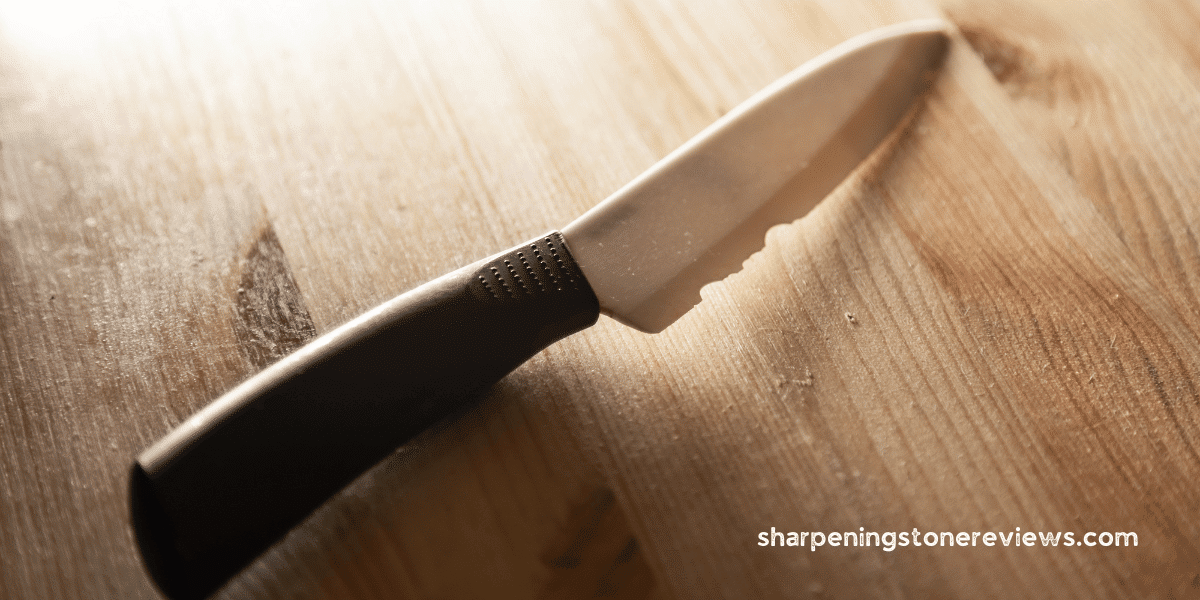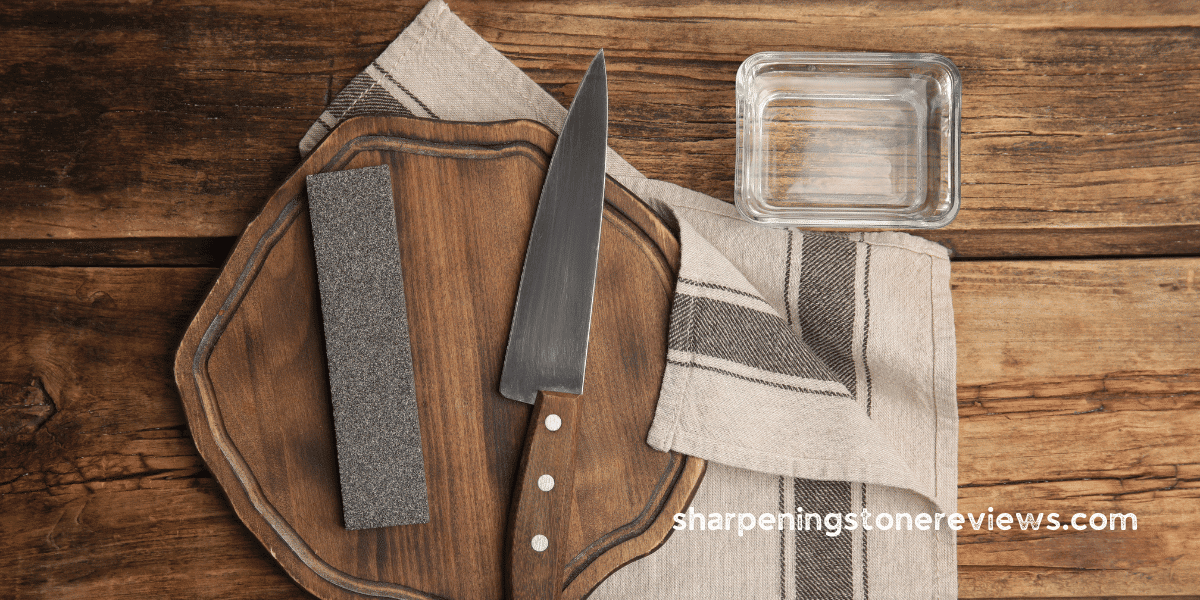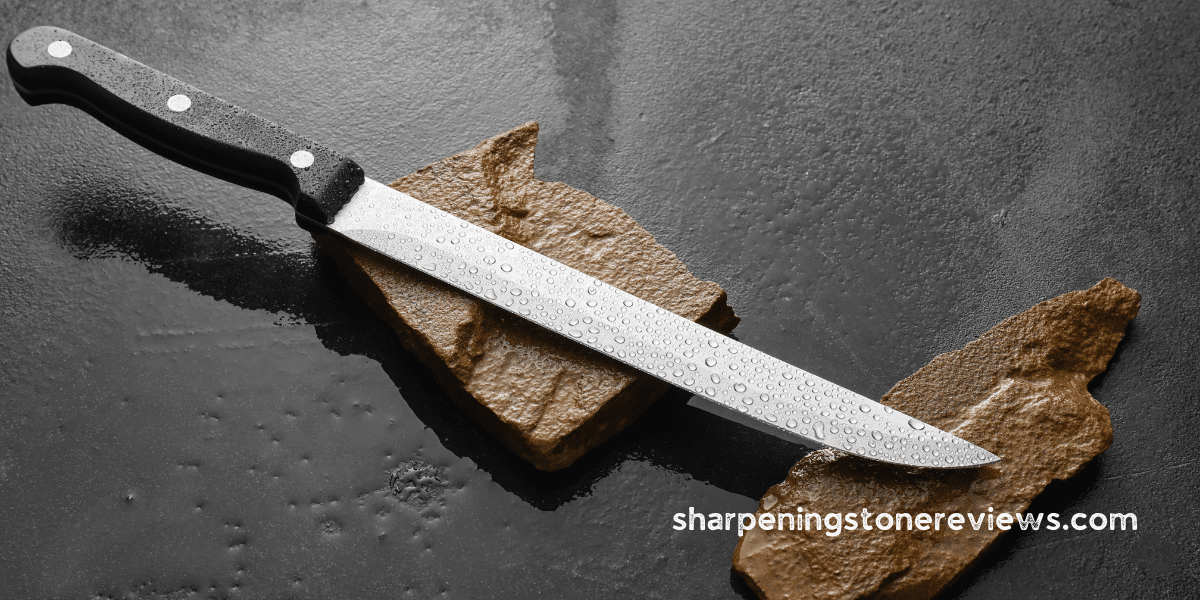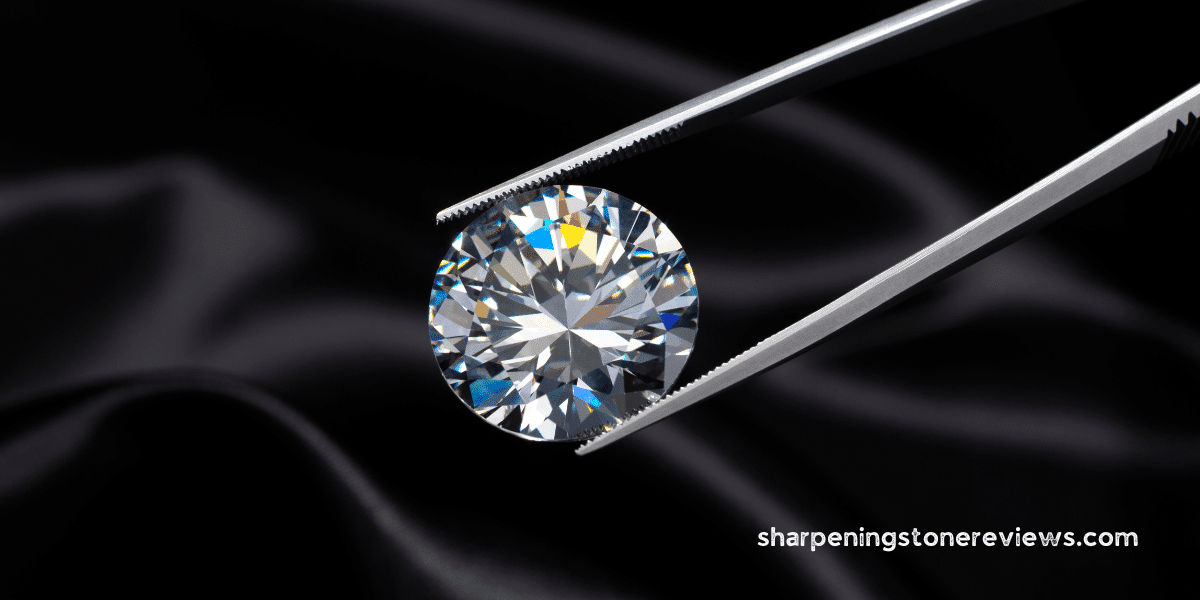If you want to keep your Shapton Glass Stones performing at their best, it’s important to flatten them regularly. Over time, these high-quality sharpening stones can develop a slight hollow or uneven surface that affects their performance.
But don’t worry; flattening your Shapton Glass Stones is easier than you think. In this article, we’ll guide you through the step-by-step process of how to flatten these stones effectively.
So grab your stones, and let’s get started on restoring their flatness for optimal sharpening results.
Soak in water
To flatten your Shapton Glass stones, you should soak them in water before use. Soaking the stones helps to ensure an even distribution of water throughout the stone and prevents any dry spots that could affect the flattening process. Before soaking, make sure to clean the surface of the stone and remove any debris or dirt.
To begin, fill a container with enough water to fully submerge the stone. Place the stone in the water and let it soak for at least 10-15 minutes. This allows the glass material to absorb water and become more pliable.
Once soaked, remove the stone from the water and place it on a flat surface, such as a lapping plate or a piece of glass. The flat surface is important for achieving an even grind across the entire edge of your tool or knife.
Using light pressure, move the stone back and forth on the flat surface in a figure-eight motion. This helps distribute pressure evenly across the entire stone surface and ensures consistent flattening. Continue this motion for several minutes until you achieve a flat surface on your Shapton Glass stone.
Remember to regularly check your progress by inspecting both sides of the stone for any uneven areas or high spots. If necessary, adjust your technique accordingly to ensure complete flattening.
After flattening, rinse off any remaining debris from both sides of your Shapton Glass stone with clean water. You are ready to start sharpening with confidence, knowing that you have achieved a perfectly flat surface on your sharpening tool.
Follow these instructions carefully for optimal results when flattening your Shapton Glass stones.
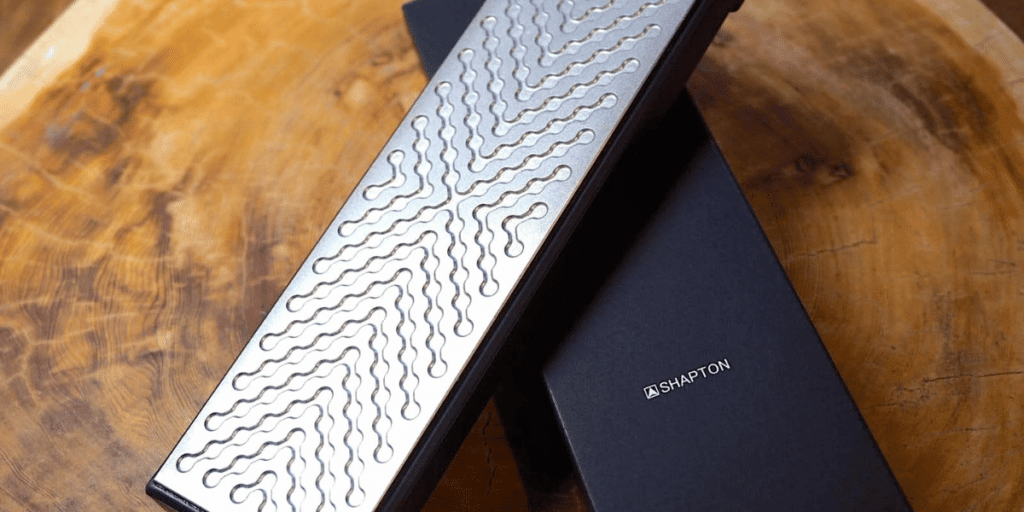
Secure on surface
Make sure you securely position the Shapton Glass stones on the surface before starting. This is crucial to ensure stability and prevent any movement while flattening the stones.
To flatten your Shapton Glass stones, you will need a flattener specifically designed for sharpening stones. There are various types of flatteners available in the market, such as diamond plates or abrasive powders.
Once you have secured the glass stones on a flat surface, take your chosen flattener and start moving it back and forth across the stone’s surface. Apply even pressure and cover the entire length of the stone to achieve an even flattening effect. It is important to maintain a consistent motion to avoid creating low or high spots on the stone’s surface.
Continue this process until you notice that your Shapton Glass stone is flat again. You can check for flatness by visually inspecting its surface or using a straight-edge tool.
After completing the flattening process, make sure to clean off any debris or residue from both sides of the stone. This will help maintain its performance and prevent any potential damage during future use.
Use coarse grit
Using a coarse grit is recommended for initial sharpening on the Shapton Kuromaku and Glass stones. This helps ensure a flat and even surface for consistent sharpening results. When it comes to flattening these water stones, it is important to have a flat stone surface that ensures consistent sharpening results. The coarser stones are ideal for this task as they help remove any irregularities or high spots on the stone’s surface.
To flatten the Shapton Glass stones, you will need a coarse stone with a lower grit rating, such as 120 or 220. Start by wetting both the coarse stone and the glass stone with water. Place the glass stone on a stable surface and rub it against the coarse stone in a circular motion. Apply even pressure to ensure that you cover the entire stone surface.
Continue rubbing until you notice that the high spots or irregularities have been removed from the glass stone’s surface. This process may take some time, depending on how uneven your glass stone is initially.
Once you are satisfied with the flattening result, rinse off any residue from both stones and dry them thoroughly before use. It is also important to note that after flattening with a coarse grit stone, you may want to progress to finer stones for more precise sharpening.
Apply pressure evenly
When applying pressure to the Shapton Glass Stones to flatten them, it is crucial to distribute it evenly across the entire surface. This ensures that you achieve a flat and consistent sharpening surface for optimal results.
To begin, place the glass stone on a stable and level work surface. Make sure there is no debris or particles that may interfere with the flattening process. Take your flattening plate or abrasive material of choice and position it on top of the stone.
Next, apply even pressure while moving the flattening plate back and forth in a sweeping motion across the entire length of the stone. Be mindful not to exert too much force, as this can damage or crack the glass surface. Instead, use controlled and steady pressure throughout.
It is important to maintain an even distribution of pressure during this process. Pay attention to any areas that may appear more resistant to flattening and adjust your technique accordingly. By applying consistent pressure, you ensure that all parts of the stone are flattened uniformly, resulting in an optimal sharpening experience.
Continue this process until you have achieved a flat and smooth surface on your Shapton Glass Stone. Regularly check for any irregularities by running your fingers along the surface or using a straight-edge tool if necessary.
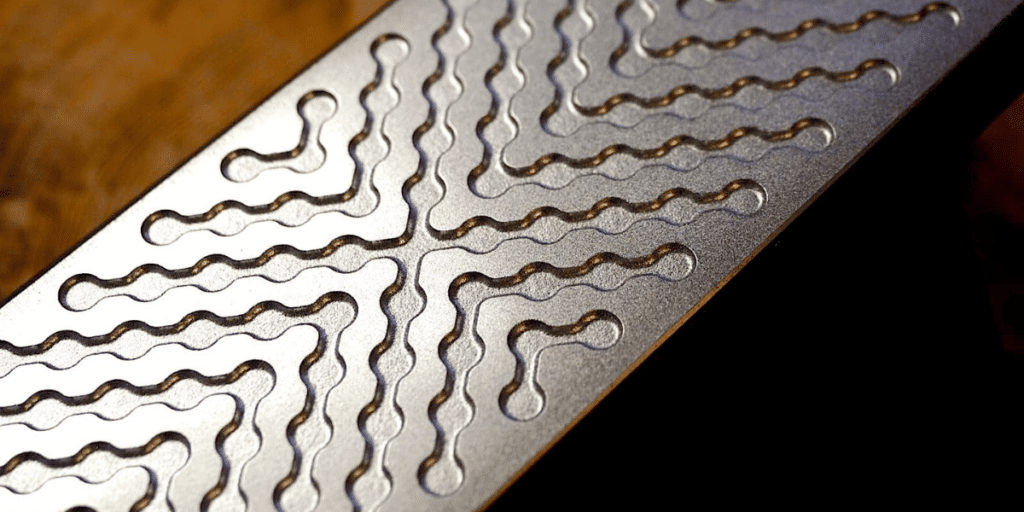
Use circular motion
To achieve optimal results when flattening Shapton Glass stones, you need to remember to employ a circular motion while applying pressure evenly across the surface. Flattening your sharpening stones is essential to ensure consistent and effective sharpening. Over time, the surface of the stone may become uneven due to wear and tear or the accumulation of metal particles. By using a circular motion, you distribute the pressure evenly across the stone, allowing for uniform flattening.
When flattening Shapton Glass stones, it is important to use tool specifically designed for this purpose. There are several options available, such as diamond lapping plates or abrasive sheets attached to glass or granite surfaces. These tools provide a flat and stable base for your stone.
To begin, place your Shapton Glass stone on top of the lapping plate or abrasive sheet. Apply light pressure with your fingers and start moving in circular motions. Make sure to cover the entire surface area of the stone by gradually increasing the size of your circles. This will help remove any high spots on the stone’s surface.
Continue this circular motion for several minutes until you feel that the surface has been adequately flattened. You can periodically check for flatness by running your fingers over different areas of the stone’s surface.
By using a circular motion while applying even pressure, you can effectively flatten your Shapton Glass stones and maintain their performance over time. Remember to clean off any debris from both sides of your stone before returning it to use.
Maintain consistent angle
For optimal sharpening results, make sure to maintain a consistent angle while using the stones. This is crucial for achieving a uniform edge on your blade and preventing any uneven wear or damage to the stone.
Here are some tips to help you flatten Shapton Glass Stones effectively while maintaining a consistent angle:
- Start by cleaning the surface of the glass stone to remove dirt or debris that may affect the flattening process.
- Place the glass stone on a flat and stable surface, ensuring that it doesn’t wobble or move during use.
- Hold your knife at a steady angle against the stone, making sure to maintain this angle throughout each stroke.
To flatten the Shapton Glass Stone, you can use specialized tools such as diamond plates or abrasive powders. These tools will help remove any high spots and ensure an even surface for sharpening. Follow these steps:
- Apply water to the glass stone’s surface to create a slurry.
- Gently rub the diamond plate or sprinkle the abrasive powder on top of the stone.
- Using circular motions, move the tool across the entire surface of the stone.
- Pay attention to areas that show more resistance, as they may indicate high spots that need further flattening.
- Continue this process until you achieve a uniformly flat surface.
By maintaining a consistent angle while flattening your Shapton Glass Stones, you’ll ensure better-sharpening results and prolong their lifespan. Remember to regularly check if your stones need flattening, as prolonged use can cause slight deformations over time.
Following these guidelines will help you maintain sharp knives and maximize performance with your Shapton Glass Stones.
Now go ahead and enjoy accurate and efficient sharpening with your properly maintained stones!
Keep stone wet.
Make sure you keep the stone wet while sharpening to prevent heat buildup and ensure effective lubrication. This is especially important when working with Shapton Glass Stones, as they are ceramic stones that can easily develop scratches if not used properly.
To keep the stone wet, you have a couple of options. One option is to use a flattening stone or another waterstone to create a slurry on the surface of the glass stone. This slurry will act as a lubricant and help prevent any heat buildup during the sharpening process. Another option is to simply splash water onto the surface of the glass stone periodically while sharpening. This will also help keep the stone wet and ensure effective lubrication.
When using Waterstones like Shapton Glass Stones, it’s important to remember that they work best when kept wet. The water acts as a coolant, preventing heat from building up and damaging both your blade and the stone itself. It also helps carry away any metal particles that are created during the sharpening process.
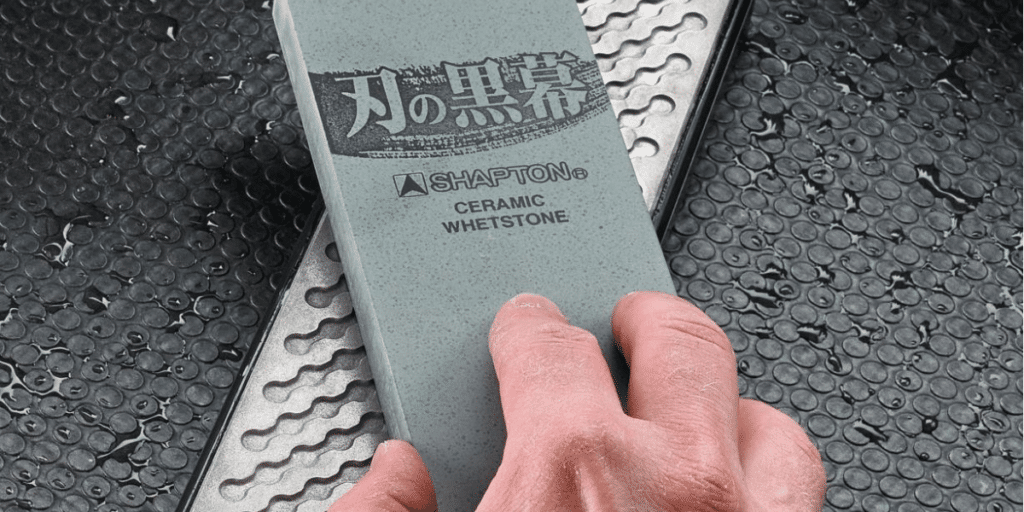
Progress to a finer grit
As you progress in your sharpening process, it’s important to move on to finer grits for a smoother and more polished edge.
When working with Shapton Glass Stones, it is crucial to ensure that the stones remain flat throughout the sharpening process. Flattening stones are essential tools that help maintain the flatness of your glass stones.
Here are three key points to consider when flattening Shapton Glass Stones:
Choose the right flattening stone
To flatten your Shapton Glass Stone effectively, you need a suitable flattening stone. Look for a high-quality diamond plate or abrasive powder on a flat surface. These options provide consistent and even abrasion across the surface of your glass stones.
Follow proper technique
Start by sprinkling water onto your flattening stone to create a slurry-like consistency. Then, gently glide your glass stone across the surface of the flattener using figure-eight motions or back-and-forth strokes. Apply light pressure and pay attention to evenly distributing the abrasion.
Check for flatness
After each pass, inspect your glass stone for any remaining concave or convex areas by observing how water spreads on its surface. If there are still uneven spots, continue flattening until you achieve an entirely flat result.
By following these steps and regularly checking and maintaining the flatness of your Shapton Glass Stones, you can ensure optimal performance and consistent results during your sharpening process at finer grit levels.
Remember that progressing to finer grit levels not only enhances sharpness but also contributes to achieving a polished edge on your blades with Shapton Glass Stones.
Rinse off debris
Now that you have progressed to finer grits on your Shapton Glass stones, it is important to ensure that they are properly maintained and flattened for optimal performance.
One crucial step in this process is to rinse off any debris from the surface of the stones. After each sharpening session, it is recommended to thoroughly rinse the glass stones under running water. This will remove any metal particles, abrasive residue, or other debris that may have accumulated on the surface during use. Use your hands or a soft brush to gently scrub away any stubborn particles.
By rinsing off debris, you prevent these contaminants from clogging the pores of the stone and affecting its sharpening capabilities. Additionally, regular cleaning helps maintain a clean working surface and prolongs the lifespan of your Shapton Glass stones.
When rinsing off debris, be sure to inspect the stone carefully for any signs of wear or unevenness. If you notice any irregularities or concave areas on the stone’s surface, it may require flattening. Flattening ensures that your glass stones remain perfectly flat and provides consistent sharpening results.
To flatten your Shapton Glass stones, you can use a diamond plate or another suitable flattening tool specifically designed for this purpose. Following proper flattening techniques will help restore a level surface and optimize its performance.
Dry after use
After each sharpening session, it’s important to dry your Shapton Glass stones thoroughly to prevent rust and maintain their performance. Drying the stones properly will also help preserve their flatness, ensuring consistent results with every use.
When it comes to flattening your Shapton glass stones, there are a few key steps to follow.
Firstly, make sure that the stone is completely dry before attempting to flatten it. Any moisture left on the surface can interfere with the flattening process and potentially damage the stone. Use clean cloth or paper towel to carefully wipe off any remaining water or debris from the stone’s surface.
Next, you’ll need a dedicated flattening plate or diamond lapping plate specifically designed for use with Shapton glass stones. These plates have a coarse grit that effectively removes material from the stone’s surface, restoring its flatness.
To flatten your Shapton glass stone, place it on top of the flattening plate and apply even pressure as you move it back and forth across the plate. This motion helps remove any high spots or unevenness on the stone’s surface.
Continue this process until the entire surface of the stone feels uniformly flat and smooth. You may need to repeat these steps multiple times depending on how much material needs to be removed.
Once you’re satisfied with the flatness of your Shapton glass stone, remember to dry it thoroughly again before storing it away. This will prevent moisture from causing rust over time.
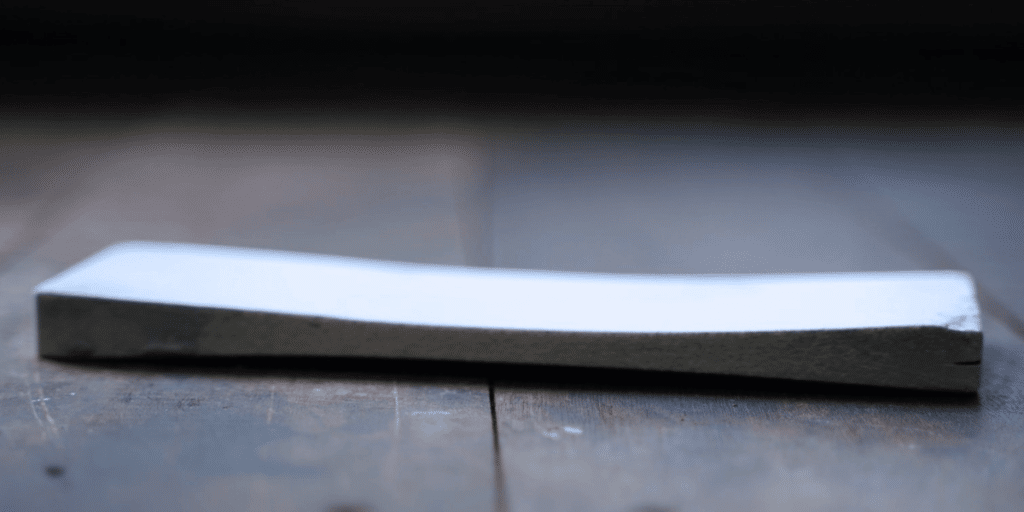
Frequently Asked Questions
Can Shapton Glass Stones Be Used With Oil as a Lubricant?
No, Shapton Glass stones cannot be used with oil as a lubricant. They are designed to be used with water only. Using oil may damage the stone and affect its performance. Stick to water for optimal results.
How Often Should Shapton Glass Stones Be Flattened?
To flatten your Shapton Glass Stones, you should use a diamond lapping plate. It’s like ironing out wrinkles in clothes, ensuring a level surface for precise sharpening. Flatten regularly to maintain optimal performance and prolong the lifespan of your stones.
Are There Any Special Cleaning Instructions for Shapton Glass Stones?
To clean Shapton Glass Stones, simply rinse them under running water and use soft brush to remove any residue. Avoid using soap or harsh chemicals. Dry the stones thoroughly before storing them.
Can Shapton Glass Stones Be Used on Serrated Blades?
Yes, you can use Shapton Glass Stones on serrated blades. They are thin and flat, allowing for precise sharpening. Follow the same technique as with straight blades, focusing on the individual serrations.
Is It Necessary to Use a Honing Guide When Using Shapton Glass Stones?
No, it is not necessary to use a honing guide when using Shapton Glass Stones. These stones are designed to be used freehand, allowing for more control and versatility in your sharpening technique.
Final Thoughts
In conclusion, when it comes to flattening Shapton Glass Stones, there are a few simple steps you can follow to ensure optimal performance. First, soak the stone in water and then secure it on a flat surface. Next, use coarse grit to remove any unevenness from the stone. Remember to apply pressure evenly and use a circular motion while keeping the stone wet. Once you have achieved a more even surface, you can progress to finer grits for a smoother finish. Don’t forget to rinse off any debris that may have accumulated during the process. Finally, after each use, make sure to dry the stone thoroughly. By following these techniques, you can maintain the flatness of your Shapton Glass Stones and enhance their sharpening capabilities.
